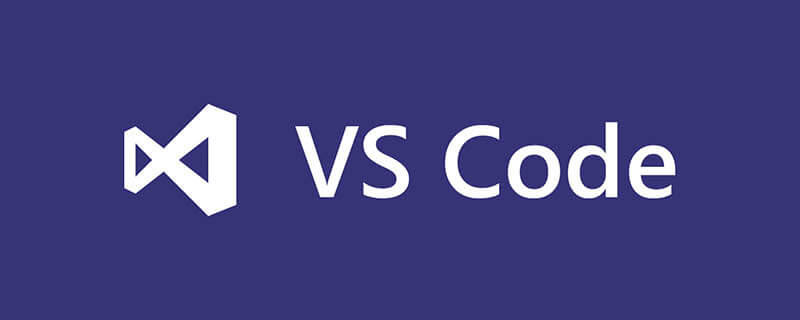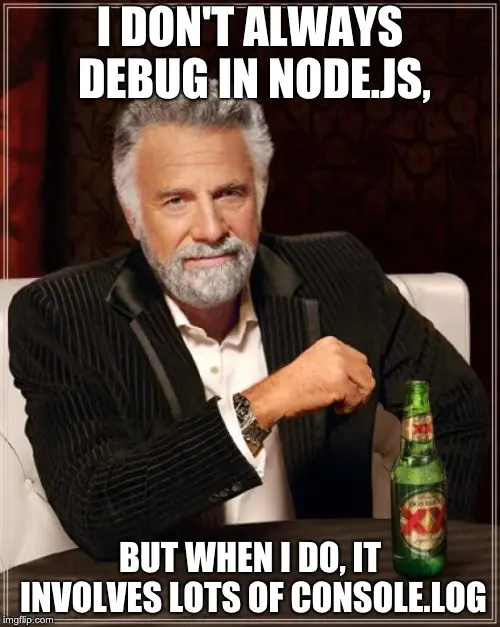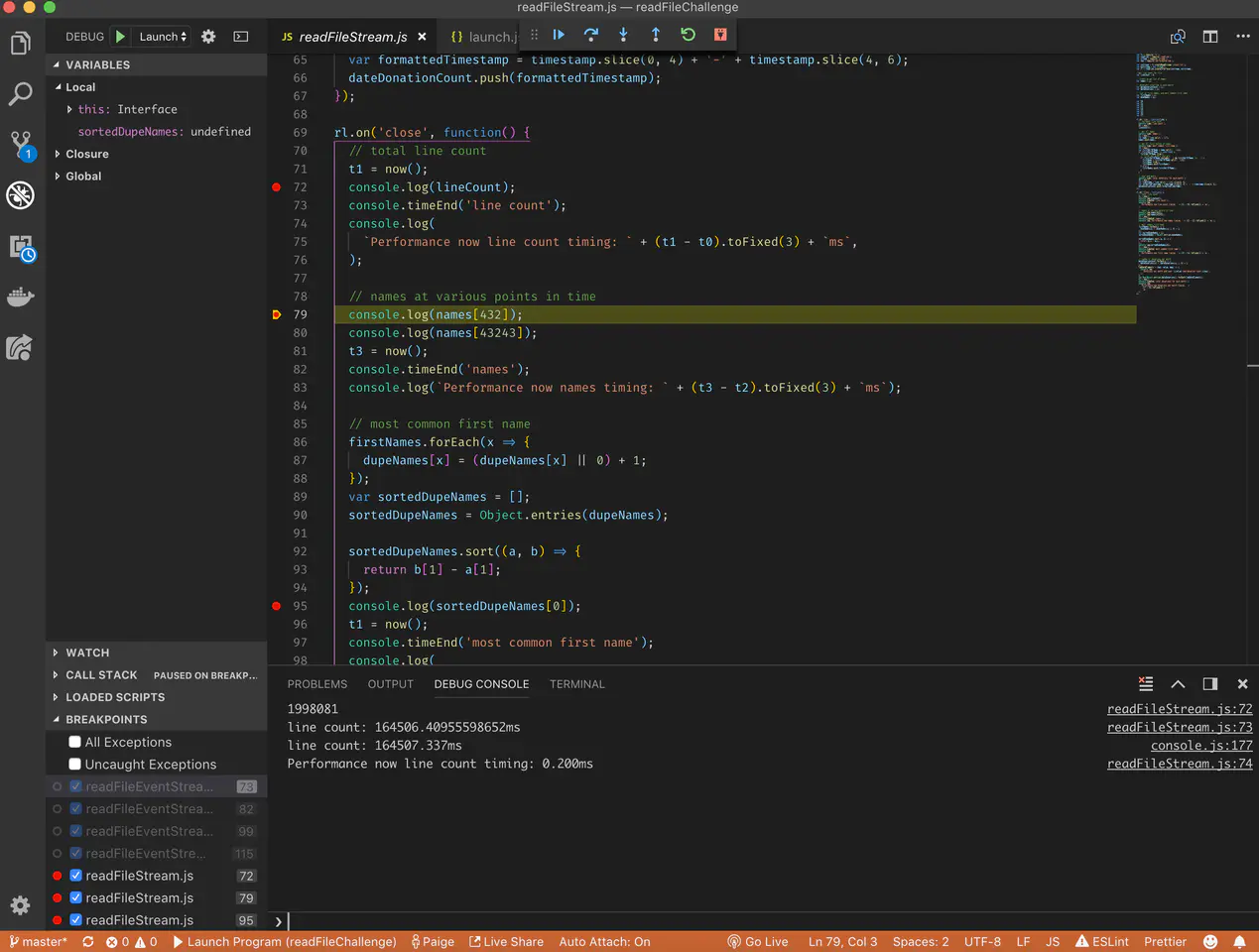 Development Tools
Development Tools
 VSCode
VSCode
 Detailed explanation of how to debug Node.js programs more simply and effectively in vscode! !
Detailed explanation of how to debug Node.js programs more simply and effectively in vscode! !
Detailed explanation of how to debug Node.js programs more simply and effectively in vscode! !
This article will introduce to you a super simple method to use vscode to debug Node.js. It has certain reference value. Friends in need can refer to it. I hope it will be helpful to everyone.

Recommended learning: "vscode tutorial", "nodejs tutorial"
Let's Let's face it... debugging Node.js has always been a pain in the ass.

Getting to the pain points of debugging Node.js
If you have ever been lucky enough to write code for a Node.js project, Well you know what I'm talking about when I say debugging it to find what's going wrong isn't the easiest thing.
Unlike JavaScript in the browser, and unlike Java with a powerful IDE like IntelliJ, you cannot set breakpoints everywhere, refresh the page or restart the compiler, nor can you slowly review the code and inspect objects , evaluate functions, find variations or missing variables, etc. It's just too bad that you can't do that.
But Node.js can also be debugged, it just requires more effort. Let's discuss these options in detail and I'll show you the simplest debugging method I've encountered in my development experience.
Some alternative ways to debug Node.js
There are some ways to debug problematic Node.js programs. I've listed these methods (with detailed links) below. If you are interested, you can check it out.
-
Console.log()— If you’ve ever written JavaScript code, this trusty standby really needs no further explanation. It's built into Node.js and prints in the terminal, just like it's built into JavaScript and prints in the browser console.
In Java language, it is System.out.println(). In Python, it is print(). You see what I mean. This is the easiest to implement, and the fastest way to "dirty" clean code with extra lines of information - but it can (sometimes) also help you find and fix bugs.
-
Node.js Documentation
—-inspect— The Node.js documentation writers themselves understand that debugging is not easy, so they do some Handy reference to help people get started debugging.
This is useful, but honestly, it's not the easiest to decipher unless you've been writing programs for a while. They quickly got into the trap of UUIDs, WebSockets, and security vulnerabilities, and I started to feel overwhelmed. I thought to myself: There must be a less complicated way to do this.
- Chrome DevTools — Paul Irish wrote a blog post about using Chrome Developer Tools to debug Node.js in 2016 (and in 2018 renew). It looks pretty simple and is a big improvement for debugging.
After half an hour and I still haven't successfully connected the DevTools window to my simple Node program, I'm not so sure anymore. Maybe I just can't follow the instructions, but Chrome DevTools seems to make debugging more complicated than it should be.
- JetBrains — JetBrains is one of my favorite software development companies and one of the developers of IntelliJ and WebStorm. Their tools have a fantastic plugin ecosystem, and until recently, they were my go-to IDE.
With such a professional user base, there are many useful articles for debugging Node, but similar to the Node documentation and Chrome DevTools options, it's not easy. You have to create a debug configuration, attach a running process, and do a lot of configuration in the preferences before WebStorm is ready.
- Visual Studio Code — This is my new gold standard for Node debugging. I never thought I'd say this, but I'm totally invested in VS Code, and every new feature release the team makes makes me love this IDE even more.
VS Code does what all other options in Debugging Node.js fail to do, which makes it foolproof. If you want to get more advanced with your debugging, that's certainly possible, but they've broken it down simple enough that anyone can get up and running quickly, regardless of your proficiency with IDEs, Node, and programming. This is awesome.
Configuring VS Code to debug Node.js

Preferences > Settings and enter node debug in the search box. There should be an extension called Node debug under the Extensions tab. Click the first box here: Debug > Node: Auto Attach, and then set the drop-down box option to on. You are now almost done with the configuration. Yes, it's quite simple.

node --inspect in the terminal. Now look, something magical happened...

VS Code ongoing code debugging
If you need a Node .js project to test it, you can download my repo. It's meant to test different forms of transferring large amounts of data using Node, but it works great for this demo. When you hit theEnter key, the bottom of your VS Code terminal will turn orange, indicating that you are in debug mode, and your console will print something similar to Debugger Information about Attached.


console in the debug console at the bottom of VS Code .log, the yellow highlight will also move with it.
Summary
Debugging Node.js does not need to be as cumbersome as it used to be, nor does it need to include more than 500console.log## in the code base # to find out the location of the bug. Visual Studio Code's
setting makes this a thing of the past, and I'm very grateful for that. In a few weeks I will be writing some articles about end-to-end testing using Puppeteer and headless Chrome, or resetting passwords in the MERN app using Nodemailer, so follow me so you don’t miss out.
Thanks for reading, I hope this article can help you understand how to debug Node.js programs more easily and effectively with the help of VS Code. Thank you so much for the applause and for sharing my article!
Original address: https://itnext.io/the-absolute-easiest-way-to-debug-node-js-with-vscode-2e02ef5b1badProgramming VideoOriginal author: Paige Niedringhaus
Translation permanent link: https://github.com/xitu/gold-miner/blob/master/TODO1/the-absolute-easiest-way-to-debug-node-js-with- vscode.md
Translator: iceytea
For more programming-related knowledge, please visit:
The above is the detailed content of Detailed explanation of how to debug Node.js programs more simply and effectively in vscode! !. For more information, please follow other related articles on the PHP Chinese website!

Hot AI Tools

Undresser.AI Undress
AI-powered app for creating realistic nude photos

AI Clothes Remover
Online AI tool for removing clothes from photos.

Undress AI Tool
Undress images for free

Clothoff.io
AI clothes remover

AI Hentai Generator
Generate AI Hentai for free.

Hot Article

Hot Tools

Notepad++7.3.1
Easy-to-use and free code editor

SublimeText3 Chinese version
Chinese version, very easy to use

Zend Studio 13.0.1
Powerful PHP integrated development environment

Dreamweaver CS6
Visual web development tools

SublimeText3 Mac version
God-level code editing software (SublimeText3)

Hot Topics
 1378
1378
 52
52
 What computer configuration is required for vscode
Apr 15, 2025 pm 09:48 PM
What computer configuration is required for vscode
Apr 15, 2025 pm 09:48 PM
VS Code system requirements: Operating system: Windows 10 and above, macOS 10.12 and above, Linux distribution processor: minimum 1.6 GHz, recommended 2.0 GHz and above memory: minimum 512 MB, recommended 4 GB and above storage space: minimum 250 MB, recommended 1 GB and above other requirements: stable network connection, Xorg/Wayland (Linux)
 How to define header files for vscode
Apr 15, 2025 pm 09:09 PM
How to define header files for vscode
Apr 15, 2025 pm 09:09 PM
How to define header files using Visual Studio Code? Create a header file and declare symbols in the header file using the .h or .hpp suffix name (such as classes, functions, variables) Compile the program using the #include directive to include the header file in the source file. The header file will be included and the declared symbols are available.
 vscode start front-end project command
Apr 15, 2025 pm 10:00 PM
vscode start front-end project command
Apr 15, 2025 pm 10:00 PM
The command to start a front-end project in VSCode is code. The specific steps include: Open the project folder. Start VSCode. Open the project. Enter the startup command code. in the terminal panel. Press Enter to start the project.
 What language is vscode used
Apr 15, 2025 pm 11:03 PM
What language is vscode used
Apr 15, 2025 pm 11:03 PM
Visual Studio Code (VSCode) is developed by Microsoft, built using the Electron framework, and is mainly written in JavaScript. It supports a wide range of programming languages, including JavaScript, Python, C, Java, HTML, CSS, etc., and can add support for other languages through extensions.
 vscode running task shortcut key
Apr 15, 2025 pm 09:39 PM
vscode running task shortcut key
Apr 15, 2025 pm 09:39 PM
Run tasks in VSCode: Create tasks.json file, specify version and task list; configure the label, command, args, and type of the task; save and reload the task; run the task using the shortcut key Ctrl Shift B (macOS for Cmd Shift B).
 How to set vscode
Apr 15, 2025 pm 10:45 PM
How to set vscode
Apr 15, 2025 pm 10:45 PM
To enable and set VSCode, follow these steps: Install and start VSCode. Custom preferences including themes, fonts, spaces, and code formatting. Install extensions to enhance features such as plugins, themes, and tools. Create a project or open an existing project. Use IntelliSense to get code prompts and completions. Debug the code to step through the code, set breakpoints, and check variables. Connect the version control system to manage changes and commit code.
 vscode terminal usage tutorial
Apr 15, 2025 pm 10:09 PM
vscode terminal usage tutorial
Apr 15, 2025 pm 10:09 PM
vscode built-in terminal is a development tool that allows running commands and scripts within the editor to simplify the development process. How to use vscode terminal: Open the terminal with the shortcut key (Ctrl/Cmd). Enter a command or run the script. Use hotkeys (such as Ctrl L to clear the terminal). Change the working directory (such as the cd command). Advanced features include debug mode, automatic code snippet completion, and interactive command history.
 How to execute code with vscode
Apr 15, 2025 pm 09:51 PM
How to execute code with vscode
Apr 15, 2025 pm 09:51 PM
Executing code in VS Code only takes six steps: 1. Open the project; 2. Create and write the code file; 3. Open the terminal; 4. Navigate to the project directory; 5. Execute the code with the appropriate commands; 6. View the output.




